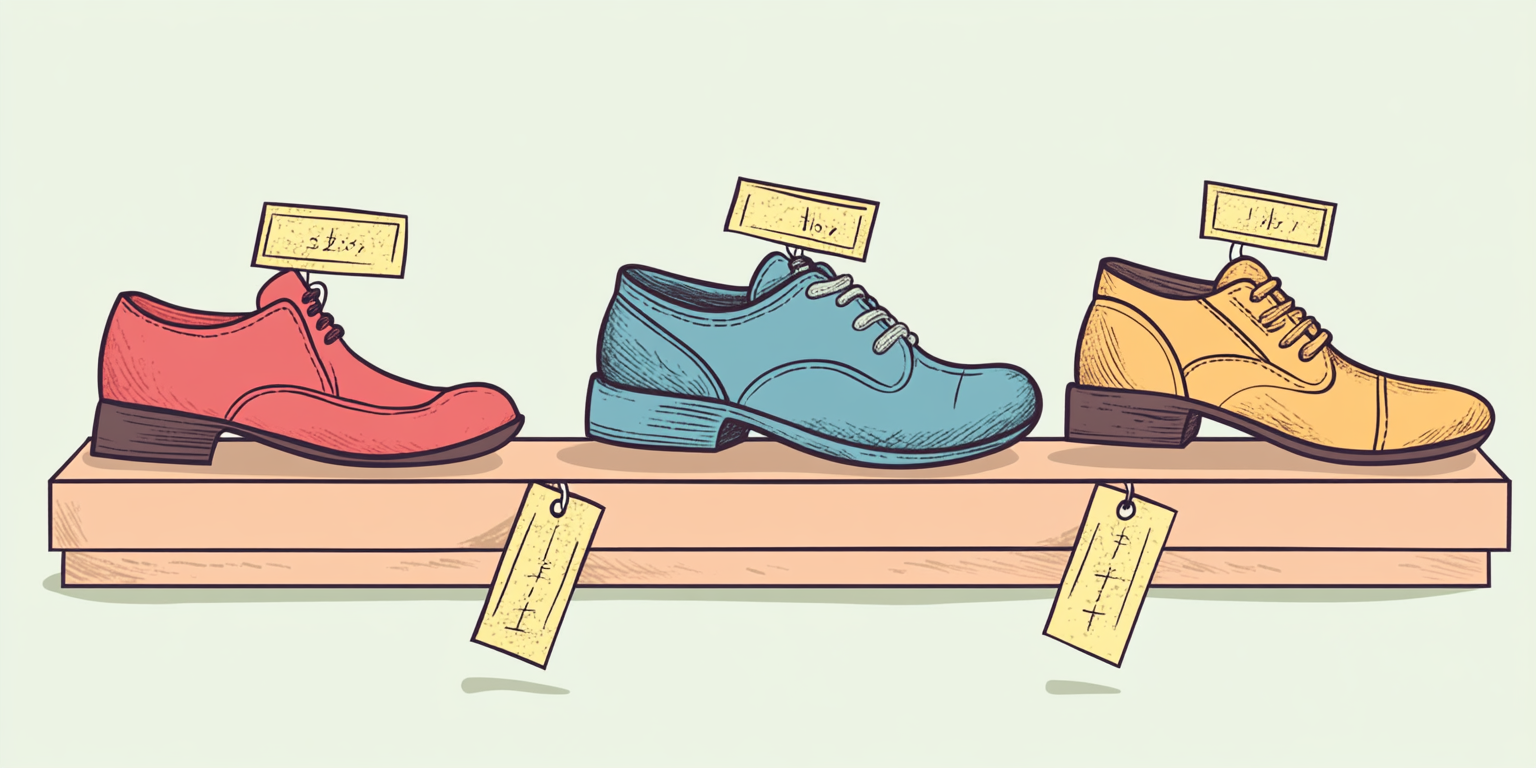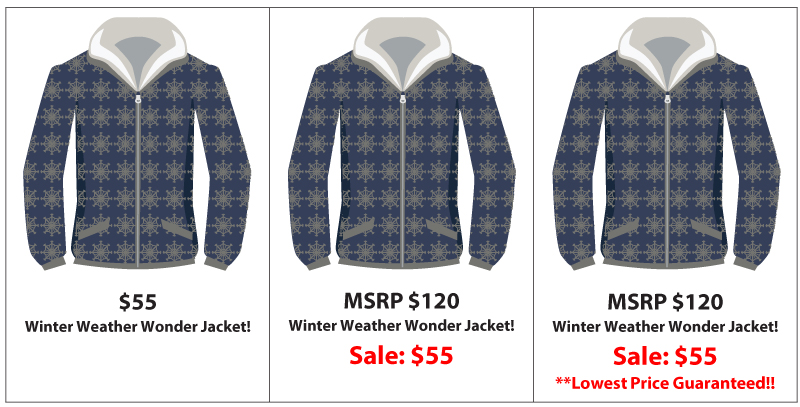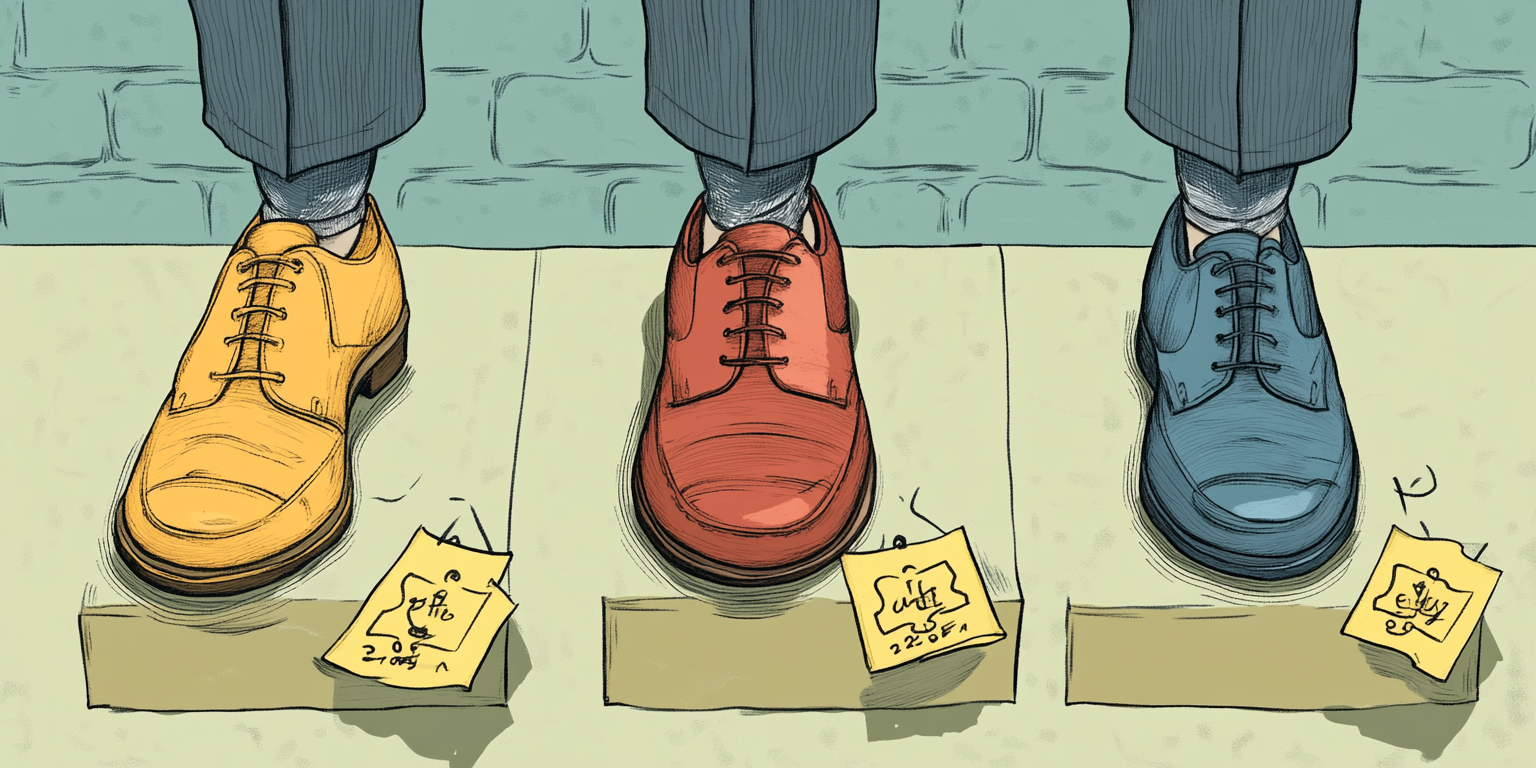The Anchoring Effect in Marketing
How First Numbers Sway Consumer Behaviour
Imagine walking into a shop to buy a new jacket.
The first one you spot is priced at £500 – much higher than you hoped to spend. But moments later you find a similar jacket for £300. Suddenly, £300 feels like a reasonable price, even though it’s still a hefty sum.
Why?
This is the anchoring effect at work.
In marketing, the anchoring effect is a powerful psychological principle: the first number or piece of information we encounter serves as an anchor that heavily influences our subsequent judgments. Whether we realise it or not, our brains latch onto that initial reference point and use it to evaluate everything that comes next. For marketers, understanding this cognitive bias is crucial – it can shape consumer perceptions of value, prices, and deals in profound ways.
In this advanced deep-dive, we’ll explore the anchoring effect through the lens of academic research and psychology, then look at how brands wield it in the real world. From pricing strategies and product lineups to clever promotional tactics, we’ll see why the first number a customer sees can make or break a sale.
The Marketing Made Clear Podcast
Check out the Marketing Made Clear Podcast on all good streaming platforms including Spotify:
What is the Anchoring Effect? (Definition and Origins)
In behavioural science terms, anchoring is the tendency to rely too heavily on the first piece of information offered (the “anchor”) when making decisions. Once the anchor is set, subsequent judgments are made by adjusting away from that anchor – and those adjustments are typically insufficient. The concept was first identified by psychologists Amos Tversky and Daniel Kahneman in their seminal 1974 study on cognitive heuristics. They demonstrated that even arbitrary numbers could sway people’s estimates. For example, ask someone if Mahatma Gandhi was older or younger than 144 years when he died (a deliberately absurd anchor), and many will then give a higher age estimate for his actual age at death than those asked if he was older or younger than 35. The irrelevant initial number “anchors” their thinking (he was 78 in case you were wondering).
In simple terms, the anchoring effect means that our decisions and estimates gravitate toward the first number we see. It’s considered a cognitive bias – a systematic error in judgment – because the anchor unduly influences us even when it’s unrelated to the actual value. Importantly for marketers, anchoring affects decisions involving numeric values like prices, discounts, and quantities. Shoppers might think they’re making a rational choice, but often that “rational” choice has been subconsciously steered by whatever value served as an anchor in the situation.
The Psychology Behind Anchoring: Why First Numbers Stick
Why do we anchor on initial information so strongly?
Psychologists offer a few compelling explanations:
Cognitive Heuristic (Mental Shortcut)
Anchoring is essentially a mental shortcut. Human brains are lazy (or energy-efficient, if you prefer): rather than judge a price or value from scratch, we take the first number that comes up and use it as a baseline. It’s quick and easy. We then adjust from that baseline for our final decision – but we rarely adjust enough. This is known as the anchoring-and-adjustment heuristic (Tversky & Kahneman, 1974). We start at the anchor and move up or down, but our adjustments are insufficient, leaving our final judgment biased towards the anchor. For instance, a consumer seeing a £1000 price tag might think “that’s higher than I want… maybe I’d pay £800” – but had the first price been £500, their idea of a suitable price might have been £400. The initial anchor skews the frame of reference.
Selective Accessibility
Another explanation is that anchors work by making certain information more mentally accessible. According to the selective accessibility model (Strack & Mussweiler, 1997), when we encounter an anchor, we subconsciously prime our minds to think of information consistent with that anchor. In a pricing context, seeing a £1000 jacket might prompt you to recall all the reasons a jacket could cost that much (designer brand, luxury materials, etc.). Those considerations make £1000 seem more plausible and simultaneously make a much lower number (say £100) seem ridiculously low for a “good” jacket. In essence, the anchor pulls our perception in its direction by framing what we consider “normal” or expected.
Ease, Familiarity, and Human Nature
Anchoring also persists because of some very human tendencies. We generally don’t like to challenge or over-analyse every piece of information – it’s exhausting. Anchors offer an easy, familiar starting point for our decision, reducing mental effort. In fact, research suggests people often trust that first piece of information almost as if it were their own idea, which is why the anchor feels “acceptable” and even informative. Marketers often leverage this by making the customer feel in control of the decision while subtly planting the anchor in front of them.
“First Impressions” in Numbers
Just as first impressions matter in person, the first number a consumer sees creates an instant frame of reference. Psychologically, that first number becomes a comparison point for anything that follows. If the first house a buyer visits is listed at £500,000, a £400,000 house might later seem like a bargain – regardless of the houses’ true market values. The anchor has created an expectation in the buyer’s mind of what things “should” cost, guiding their decisions moving forward.
Academic studies underline how hard it is to avoid anchoring. Even experts are not immune. In one notable study, experienced real estate agents were given identical information about a house, with only the listing price (the anchor) varying – and sure enough, their appraisals were biased in the direction of the listing price, just like non-experts.
In another famous experiment, professor Dan Ariely demonstrated that even random, meaningless numbers can anchor consumer behaviour. He had students write down the last two digits of their social security numbers, then asked if they’d pay that amount for various products (e.g. would you pay £__ for this bottle of wine?). Remarkably, students with higher two-digit numbers (e.g. 80–99) ended up willing to pay significantly more on average than those with low numbers (00–19) when later asked to state their maximum willingness to pay. Despite insisting that the random digits had no influence on them, the students’ valuations were systematically biased by those arbitrary anchors. This irrational effect – being swayed by irrelevant figures – is exactly what makes anchoring a crucial concept in marketing. Consumers might be anchoring on any number you give them, so savvy marketers must choose that number carefully!

Anchoring Effect in Pricing Strategy
Pricing is where the anchoring effect shines (or, if misused, backfires) most visibly in marketing. Price anchoring means setting an initial reference price that shapes the customer’s perception of subsequent prices.
Marketers and retailers have developed an arsenal of pricing tactics around anchoring:
“Was/Now” Pricing (Strike-through Prices)
Displaying a higher original price next to a discounted price is a classic anchoring tactic. For example, a tag that says “Was £120, now £55” immediately implants £120 as a comparison point. £55 doesn’t just look good – it looks fantastic in that context. Shoppers feel like they’re getting a steal, largely because the £120 anchor tells them the item used to be valued much higher. Research in consumer psychology shows that the original price provides a crucial yardstick for shoppers – it brings a sense of certainty to an otherwise uncertain value judgment. In fact, when J.C. Penney (a large US department store) famously tried eliminating all “fake” reference prices in 2012, opting for honest low prices with no crossed-out higher prices, customers balked. Sales plummeted. Shoppers no longer had an anchor to indicate what kind of deal they were getting, and thus $20 for a shirt felt expensive instead of a great bargain on a “formerly $40” shirt.
The lesson? A higher reference price, even if few customers ever paid it, makes the current price seem more palatable and the purchase decision feel justified.
Manufacturer’s Suggested Price & High List Prices
Similar to strike-throughs, listing a Manufacturer’s Suggested Retail Price (MSRP) or an initial high price sets an anchor in consumers’ minds. Retailers often never intend to sell at that MSRP; it’s there to anchor the buyer high, so that any discount or bundle seems attractive. As behavioural economist Dan Ariely notes, consumers are bombarded with prices all the time, but a price only becomes an anchor when the consumer is considering buying that item at that price. Once they contemplate it, that price sticks. Online shopping sites exploit this by showing a “compare at £X” price or an “RRP” that is higher than their sale price. The moment a shopper sees a laptop “originally £1299, now £899”, £1299 lodges in memory as a measure of the laptop’s worth, and £899 starts to feel like a good deal (“I’m saving £400!”). This is why you’ll often see phrases like “Save 50%” or “£200 off MSRP” – the emphasis is on the high anchor and the size of the gap, not just the final number.
Tiered Pricing and Premium Options
Companies frequently include an intentionally pricey option in a product lineup to serve as an anchor. The aim isn’t to sell a lot of that uber-expensive option; it’s to make the next option down look reasonable by comparison.
The famous example is that a restaurant might list a £150 bottle of wine at the top of the menu. Very few people will order it – but that pricey bottle anchors what a “high” price is, so the £60 bottle next on the list suddenly feels modest and more people splurge on it. Many high-end menus and wine lists use this trick: the presence of a few extremely expensive items makes the rest of the menu seem relatively affordable. In retail, this strategy was demonstrated famously by Williams-Sonoma. The kitchenware retailer once struggled to sell a bread-making machine priced at $275 – until they added a deluxe bread maker for $429 next to it. They scarcely expected to sell many of the $429 model, but it made the $275 machine seem like a bargain, and sales of the cheaper model reportedly shot up.
The high-priced alternative acted as a foil, or anchor, that reframed consumers’ perceptions of value.
Likewise, tech companies like Apple have mastered this: when the first iPad was about to launch, rumors swirled that it might cost as high as $999. By the time Steve Jobs announced a $499 starting price, consumers felt relief – $499 was half of the anchored expectation and thus a “great deal” for a new gadget. (Never mind that $499 was still a premium price point for a tablet in 2010 – compared to $999 it sounded fantastic.) Apple often lets speculation drive anchors, or offers high-end configurations (like an iPhone Pro Max fully loaded at over £1500) so that a £799 base model seems relatively attainable. The principle is the same: a higher anchor price boosts the perceived value of the next options.
Ordering and Product Placement
The sequence in which prices or products are presented can itself create anchoring effects. Savvy marketers and web designers will often list the priciest option first (for example, on a pricing page for software or a “good-better-best” service menu) because the first number a customer sees will anchor their sense of cost. Seeing a “Platinum Plan – £299/month” up front makes the “Standard Plan – £99/month” that comes after feel relatively cheap, whereas if you started at £99, the jump to £299 would feel startling.
Similarly, physical placement can create an anchor through contrast: a clothing store might place a rack of £200 jeans at the entrance – not expecting everyone to buy them, but to calibrate the shopper’s mind. After browsing those, a pair of £120 jeans in the next section might strike the customer as quite reasonable. Even context outside of retail can plant anchors: Luxury car brand Rolls-Royce famously moved their exhibit from auto shows to aviation shows; as ad man Rory Sutherland quips,
“If you’ve been looking at jets all afternoon, a £300,000 car is an impulse buy. It’s like putting the sweets next to the counter.”
In other words, after million-dollar private jets, a six-figure car feels like a drop in the bucket – a clever use of environmental anchoring.
Illustration below: The same winter jacket presented in three ways, demonstrating price anchoring. In the left panel, the jacket is simply priced at £55. In the middle, an “MSRP £120” label is added above Sale: £55 – suddenly £55 looks like a steal. The rightmost version likewise shows MSRP £120 and Sale £55, with an extra “Lowest Price Guaranteed!!” banner to hammer the point. These reference prices (£120) serve as anchors, making the £55 sale price seem immensely attractive by comparison. Even though nothing about the jacket changed, the context around the price dramatically shifts consumers’ perception of its value.

The takeaway for pricing strategy is clear: the first price your customer encounters should usually be strategically chosen to set the tone. If you want to sell a mid-range product, consider presenting a premium product first to anchor high. If you’re offering a sale, don’t just show the sale price – show what it’s marked down from to maximize the perceived savings. And conversely, be aware that if you accidentally anchor too low (e.g., highlighting a cheap item first), you can make your other offerings seem overpriced by contrast. Anchoring works because consumers naturally think in relative terms (“relative to that first price I saw”) rather than absolute terms – so always frame the reference that will cast your product in the best light.

Anchoring in Product Lineups and Placement
We’ve touched on how product assortment can create anchors (the bread maker and wine examples). Let’s delve a bit more into product placement and assortment strategies that leverage anchoring:
Decoy and Companion Products
Often, an anchor in a product lineup might be a decoy – a product that isn’t intended to sell on its own but exists to make another option look more attractive. The Williams-Sonoma case above is one example. Another classic case comes from subscription services.
The aforementioned Dan Ariely recounts a promotion from The Economist magazine that offered three options:
- Online-only for $59
- Print-only for $125
- Print+Online for $125.
The print-only option was a strange “decoy” because at the same price as the combo, it was obviously inferior – nobody would choose it. But its presence anchored the value of a print subscription at $125, making the $125 combo seem a great deal (you’re essentially getting online for free). Sure enough, when the decoy was present, most people chose the $125 combo over the $59 online-only option; when the decoy was removed in an experiment, far more people chose the cheaper $59 option. The decoy acted as an anchor that steered customers to the more expensive (and more profitable) choice. While the decoy effect is slightly different from pure anchoring, it demonstrates how strategic placement of an extra option can shift preference by altering perceived value.
Contextual Anchoring (Cross-Category)
The Rolls-Royce example shows anchoring by context. High-end retailers sometimes place their goods in contexts that make them seem less exorbitant. A £5,000 handbag might be advertised alongside even pricier jewellery or in luxury magazines where five-figure price tags are commonplace, so that it doesn’t seem so outrageous to the target consumer.
Even in-store, a savvy layout might put a few ultra-premium items in key sightlines. This is all about shaping the consumer’s internal benchmark. If the most expensive TV in a showroom is £2,000, that becomes an anchor for what “top-of-the-line” means; if the most expensive is £10,000 (perhaps an 8K cinema-sized screen), then suddenly a £2,000 TV (previously the max) can start to feel mid-range or even entry-level in that context. Brands can thus reposition how their core products are perceived by introducing higher-end anchors.
Shelf Placement and Visual Anchors
It’s worth noting that anchoring isn’t only about prices; any salient piece of information can anchor perception. In product placement, something as simple as the size of the first item a customer sees can anchor expectations. For example, a study might find that seeing a “jumbo” size popcorn first makes a large size seem reasonable, whereas if the first exposure is a medium, the large might seem excessive. In marketing, companies sometimes label a size as “Small” when it’s actually what others might call Medium – but the existence of a “Large” and “XL” option anchors the idea that the Small is a modest portion (encouraging more people to upsize). This isn’t price anchoring per se, but it’s a similar principle of establishing a reference pointthat influences choices down the line.
Finally, product narratives can include anchors too. If a salesperson says “This car is the luxury model of our lineup, loaded with features” right before showing you the price, they’ve anchored you to expect a high number (and to mentally justify it). In contrast, framing something as “our budget-friendly basic option” sets a low anchor of expectation. Marketers must ensure that if they drop an anchor like “luxury” or “premium”, the subsequent price tag, however high, is seen in that anchored context (so it feels warranted). The art of anchoring in product placement is subtle: you want to influence the customer’s frame of reference without them feeling blatantly manipulated.
Anchoring in Promotions and Advertising
Anchoring isn’t just a pricing or product issue – it’s alive and well in how promotions are communicated and advertised. Marketers often anchor consumers with numbers in ads to drive urgency or perceived value. Some common applications:
Quantity Limits and Bulk Deals
Ever seen signs like “Limit: 5 per customer” during sales?
That’s anchoring how many units you might buy. A famous supermarket experiment involved Campbell’s soup on sale. In one scenario, the sign read “No limit per person.” In another, it read “Limit 12 per person.” Shoppers could buy as many cans as they wanted in both cases – the difference was purely the presence of an anchor number.
The result?
Customers who saw “Limit 12” bought on average 7 cans, more than double the ~3.3 cans that people bought when no limit was mentioned. Merely suggesting a high number as a reasonable quantity (even as a limit) pushed people to buy more. The number “12” became an anchor for an acceptable purchase quantity, nudging folks upward. Similarly, “2 for £20” deals can anchor shoppers to buy two, even if they only came for one – the multi-buy framing sets a new norm. In one analysis, multiple-unit pricing (like “4 for $2” instead of “$0.50 each”) significantly increased sales volume, in part because that first number (4) planted the idea that buying 4 is a smart choice.
Scarcity and Time Anchors
Phrases like “Only 24 hours left!” or “Only 100 units available!” also plant anchors in consumers’ minds. While these primarily invoke scarcity (a separate psychological effect), they double as anchors for urgency and quantity. “Only 100 left” anchors the notion that 100 is a small quantity in this context (so the product must be popular). Likewise, a countdown clock in an online sale (e.g. “05:00 minutes remaining to claim this deal”) is a form of anchoring – it focuses you on a very short time window, making you judge your decision against that ticking anchor of time. These aren’t numeric anchors in the sense of price, but they serve a similar function: providing a reference point that shapes perception (in this case, that time is running out, so one must act fast).
Advertising Claims and Comparisons
Marketers often present an initial number in advertising to serve as a compelling anchor. For example: “Our service saved clients an average of £1,200 last year” – that £1,200 figure anchors the customer’s expectations of value if they use the service. Or a car commercial might lead with “400 horsepower” – that number anchors performance, so when the price is revealed, the audience judges it in light of that high-performance spec.
Even charities use anchoring: donation forms might list suggested amounts (£50, £100, £250) in which the high number anchors what a “generous” donation looks like, subtly pushing many donors to avoid the lowest anchor (£50 feels low when £250 is sitting there as a comparison). The principle is always to set the frame before the main pitch. If an infomercial host first says, “Products like this can cost over $300,” and then introduces their product at “3 easy payments of $49.99,” they have anchored you at $300+ and made ~$150 seem like pocket change.
Case: KFC’s “Buy Four” Campaign
A particularly clever example of anchoring in promotion comes from a 2014 KFC campaign in Asia. KFC wanted to boost sales of their inexpensive fries without changing the product or price. The ad campaign headline was: “A deal so good, you can only buy four.” In other words, “Just 4 packs per customer.” This anchor of “4” packs immediately set a reference quantity in consumers’ heads. Even though most customers weren’t originally planning to buy multiple packs of fries, the idea of a limit of 4 made them consider buying more.
The result was striking – the average sale per customer jumped, contributing to a 56% increase in fry sales during the campaign. By anchoring the allowable quantity at 4, KFC not only created a sense of scarcity (“it’s so good, we have to limit it”) but also normalised the idea of buying multiple packs. Customers who might have just bought one order of fries were nudged to think “hmm, maybe I should get two or three… after all, up to four is allowed.” It was a national-scale demonstration that how you frame an offer can dramatically alter buying behavior – without changing the product or even the price at all.
Framing Discounts and Savings
When promoting discounts, advertisers often choose anchors that maximise impact. If a product is 33% off, they might instead advertise “Save $50” (if $50 sounds larger or more concrete to the audience). Or they might say “Half off” instead of “$50 off” if 50% sounds more impressive relative to the context. In essence, they’re picking which number will stick as the anchor – 50 (percent) or $50 – depending on which seems larger in the mind for that scenario. In subscription services, you’ll frequently see “Equivalent to just £2 a day” which anchors the cost at a daily £2 (the price of a coffee) rather than the more stark £60/month. Any single figure highlighted in marketing copy is likely an intentional anchor chosen to sway perception.
In all these cases, the anchoring effect is harnessed to either increase the quantity the consumer buys, enhance the perceived value of the deal, or speed up the decision (by framing the context, like time or quantity limits). The best promotions find an anchor that resonates with consumers’ sense of a good deal. However, marketers must use this ethically: if the anchor is seen as deceptive (e.g. an artificially inflated “original price” that no one ever really paid), consumers may catch on and lose trust. The goal is to have the customer feel that on their own they’ve judged your offering to be great – thanks in part to the anchor you presented which nudged that judgment along.
Conclusion: Leveraging Anchoring Ethically for Marketing Success
The anchoring effect teaches us that in marketing, first impressions truly matter – especially when they come in the form of a number. Consumers use those first numbers as touchstones, often without realising it. For marketers, this means the power to influence decisions is often in the initial frame you set, whether it’s a price, a discount, a quantity, or any reference point that will color the rest of the experience.
Key takeaways for marketers and brands:
-
Always Provide a Reference Point: Don’t present an offer in a vacuum. Introduce a comparison or reference – a previous price, a competitor’s price, a higher-tier product, or even an expected benchmark. The right anchor can make your actual offer shine. For example, if you’re selling a software subscription, show the “Professional Plan £99” before the “Basic Plan £49” so that £99 anchors what a full solution costs and £49 feels like a deal.
-
Frame Value Before Price: Use anchoring to highlight value before the cost is considered. If you lead with the statement “Save 10 hours a week” or “Boost sales by 25%,” those numbers anchor the benefits. When the price or ask comes later, customers subconsciously weigh it against the anchored benefit (10 hours saved or 25% gain) rather than evaluating price in isolation.
-
Use High Anchors to Elevate Perceived Quality: Higher prices or quantities as anchors can signal higher quality or popularity – as long as they’re credible. A luxury brand shouldn’t be shy about mentioning a high reference price (or a very exclusive production quantity) to maintain a premium image. The anchor can justify why your product is worth a premium. Even for non-luxury brands, a moderately high anchor (like an “original price” or a top-tier package) can boost the perceived standard of your offerings.
-
Employ Anchoring in Multi-Tier Pricing: If you have tiered products or plans, design them with anchoring in mind. It often makes sense to include a “gold-plated” option simply to make the next option look reasonable (and to make bargain options look, well, cheap). This has to be balanced – your anchor option should still have a rationale to exist (some customers will buy it, after all). But its larger role can be to guide more customers into the mid-tier sweet spot. This strategy has been proven to increase uptake of middle options when done thoughtfully.
-
Anchor on the Positive, but Stay Truthful: Ethically, your anchoring should not stray into trickery. Present genuine anchors: prices that have been charged before, quantities that make sense, limits that reflect demand. If you simply invent an outrageously high anchor with no basis, consumers may smell something fishy. Today’s consumers are armed with information – a quick web search can reveal if an MSRP is inflated or a “previous price” is unrealistic. Use anchors to frame the truth advantageously, not to deceive. An honest deal framed well will beat a fake deal any day in building long-term customer trust.
-
Test and Learn: Because anchoring is so situational, it’s an ideal candidate for A/B testing in marketing. Try different anchor prices or different orderings of options on your website to see which configuration drives more conversions or higher basket values. Do customers react better to “50% off” or “Save £100”? Does adding a £1000 super-premium version of your service boost sales of the £500 version? Small changes in the anchor can have outsized effects, so use data to optimise your approach.
In the end, anchoring is about perspective. A price, a product, or a deal has no absolute value in a consumer’s mind – it’s valued relative to something. As a marketer, you get to influence what that “something” is. By smartly choosing the anchors you present, you’re effectively setting the story around your offering: you decide whether the glass is half-full or half-empty before the customer even grabs it. When done right, anchoring can help customers feel confident in their choice – “this does seem like the right option at the right price” – which is exactly the reassuring mindset you want to foster.
So, anchor away – but anchor honestly and intelligently. The first number or idea your audience encounters will echo in their mind throughout the decision process. Make that first impression count. In the intricate dance of behavioural marketing, anchoring is your opening move – set the tempo well, and the consumer just might dance to your tune all the way to checkout.


